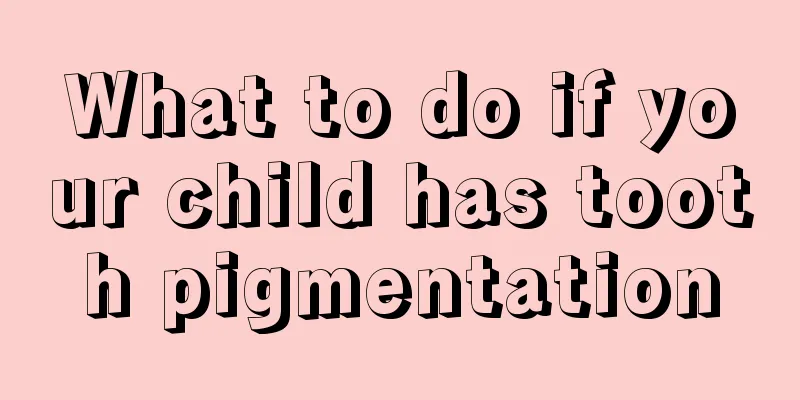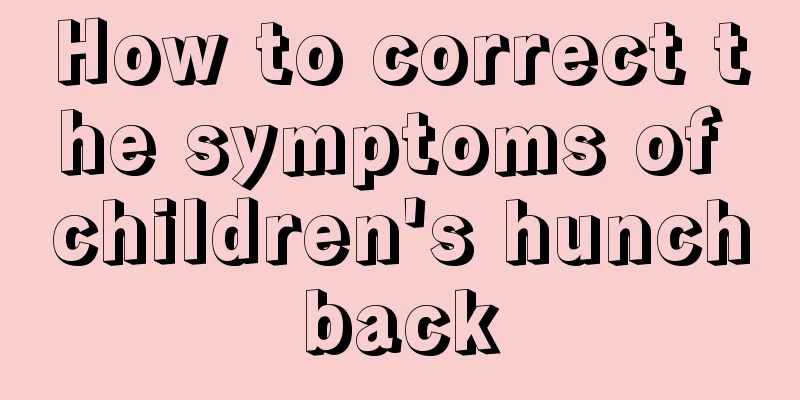What to do if your child has tooth pigmentation

|
Recently, many parents around me have told me that their children have different degrees of pigmentation on their teeth. In fact, my child has also had this situation. I didn’t pay much attention to it at first, but I found that it was getting worse over time. I tried many methods, and I want to share with you the methods I think are effective for children’s tooth pigmentation. There are many reasons for tooth pigmentation and yellowing of teeth, which can be roughly divided into two aspects, namely endogenous and exogenous. Exogenous tooth pigmentation is due to the presence of various bacteria on the surface of teeth, which secrete many sticky substances. Tea stains in daily diet and certain minerals in drinking water are adsorbed on these sticky substances, gradually turning teeth yellow or black. Endogenous tooth pigmentation is formed during the development of teeth. For example, if tetracycline is deposited in the dentin, the teeth will turn yellow, brown or dark gray, which is called tetracycline teeth. If there is too much fluoride in the drinking water, it may also cause fluorosis, and the tooth surface will appear white chalk-colored or have brown patches. If the dental nerve is necrotic and combined with bacterial decomposition products, the teeth may also turn black. Teeth whitening is essentially a procedure that removes stains and pigments from the enamel and coating of your teeth. Depending on the depth of tooth pigmentation and the cause of its formation, different whitening methods should be adopted. To sum up, to prevent children's tooth pigmentation, we need to pay attention to several aspects: 1. Start implementing protective measures from the time your child has baby teeth. Infants can use gauze dipped in light salt water Wipe your child's teeth and rinse his mouth with water after feeding, especially at night. Start brushing your child's teeth as early as possible. Don't ever think that baby teeth will always be replaced, and that white teeth will naturally grow out after the baby teeth are replaced. 2. Let your children eat sugar and sugary foods, such as biscuits, as late as possible. Avoid eating foods that can easily cause tooth pigmentation, such as chocolate or Chinese medicine, for a long time. Do not feed smaller children foods that are too soft for long periods of time. 3. It is unlikely that children will like brushing their teeth before the age of 4. Because children always feel uncomfortable when someone else brushes their teeth, you can take some measures to attract their interest. Encouraging children over 4 years old to brush their own teeth can effectively prevent tooth pigmentation. 4. It may also be caused by calcium deficiency. You can consider calcium supplementation according to the specific situation of the child. Children have tooth pigmentation. In addition to protecting and whitening their teeth, we also need to pay attention to finding out what causes the child's tooth pigmentation. We also need to pay attention to the baby's balanced diet and nutritional supplements on a daily basis. Don't let the baby always eat sweets, which is very bad for tooth development. I hope my answer is helpful to you. I wish you good health. |
<<: Newborn milk powder feeding amount
>>: What causes newborns to spit?
Recommend
White spots on baby's face
Many parents may have noticed that their babies h...
Can a six-year-old child's amblyopia be cured?
If a six-year-old child is diagnosed with amblyop...
What to do if children's tonsils are often inflamed
Tonsillitis in children is a common disease among...
There is a big gap between the baby's upper front teeth
Babies will receive special attention from their ...
What foods are good for children's spleen and stomach
During the child's growth and development stag...
Baby has diarrhea and anus is red and painful
Every baby is a little angel who brings endless j...
What to do if your child has rotten feet
Children need a lot of care as they grow up, so w...
What should I do if my child sweats at night?
When the child is sleeping soundly and sweetly. Y...
How many months is appropriate to breastfeed?
Nowadays, more and more people are beginning to a...
The harm of reduced normal hemoglobin value in infants
The growth and development of the baby's body...
Children's safety knowledge on preventing drowning
There are many drowning incidents among young chi...
Why does the baby have a cold and sweat?
Colds don't just happen to adults, they also ...
Do all children's baby teeth need to be replaced?
Deciduous teeth are teeth that exist in childhood...
Do not confuse wind-cold colds and wind-heat colds in children
In spring, children are more likely to catch cold...
How to supplement calcium deficiency in children? There are many methods we have overlooked!
Nowadays, many parents buy some expensive health ...









